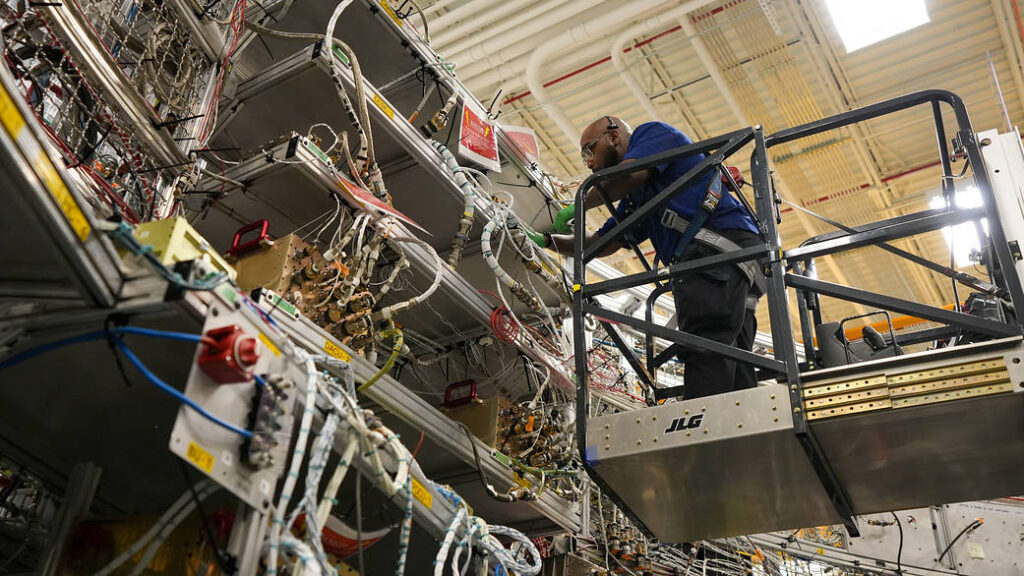
Software engineers recently finished the first part of the Artemis II SLS flight software’s formal qualification testing. (Photos: NASA/Brandon Hancock)
As NASA’s Artemis program progresses, its team is reaching significant milestones. The first Artemis astronauts have commenced their training for the landmark Artemis II mission, which will orbit the Moon. Meanwhile, at NASA’s Marshall Space Flight Center in Huntsville, Alabama, dedicated teams are testing and configuring the flight software that will power the large Moon rocket on its journey.
The initial training phase for the key members of the Artemis II mission is well underway. At the heart of the mission lies the Space Launch System (SLS), NASA’s most powerful rocket. When the SLS launches the Artemis II crew aboard the Orion spacecraft, the rocket will generate 8.8 million pounds of thrust. The flight software of the SLS acts as the “brains” of the rocket, orchestrating its complex operations from ignition until the separation of the in-space propulsion stage, all transpiring within the critical first eight minutes of the mission.
Inside the state-of-the-art SLS Software Development Facility (SDF) at the Marshall Space Flight Center, a team of skilled software engineers recently completed the initial phase of formal qualification testing for the Artemis II SLS flight software. This software, consisting of approximately 50,000 lines of code, has undergone rigorous testing to ensure its reliability and efficiency.
The testing process involves simulating various normal and off-nominal SLS rocket and environmental scenarios, known as test cases, to assess the performance of the SLS computer systems and flight software. The engineers executed 179 procedures, comprising approximately 58,000 test cases, during the two-week test period, surpassing the scope of the previous qualification testing conducted for Artemis II in 2022.

Building on the success of the Artemis I launch in November 2022, the SLS flight software team has incorporated operational enhancements and novel test scenarios into the Artemis II preparations. Valuable lessons learned from previous missions have influenced the development of the software, ensuring that it is primed to respond effectively to thousands of potential test cases on launch day.
The upcoming months will witness the commencement of the second and final phase of formal qualification testing for the SLS flight software in the SDF, scheduled to begin in July. Engineers will initiate integrated system testing in the SLS System Integration Lab (SIL) using the complete suite of SLS avionics hardware and flight software, starting in the fall. The comprehensive results obtained from the SIL system and the flight software SDF will provide essential evidence to support the readiness of the Artemis II mission.
By the time Artemis II embarks on its journey, the flight software engineers will have virtually “flown” the SLS mission more than 100,000 times within the extensive SLS avionics and software development and test facilities.